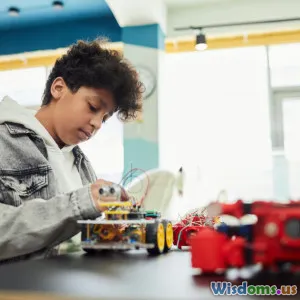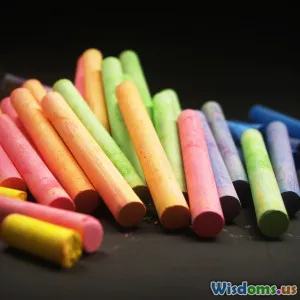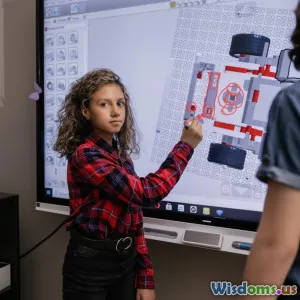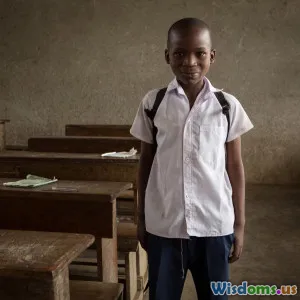
How Project Based Learning Ignites Student Creativity Fast
9 min read Explore how project based learning rapidly sparks student creativity through hands-on projects, real-world problem solving, and collaborative environments. (0 Reviews)
How Project Based Learning Ignites Student Creativity Fast
In today’s rapidly evolving world, fostering creativity in students isn't just a desirable educational outcome—it's an essential one. Traditional teaching methods, often centered around rote memorization and passive learning, can stifle creative potential. But what if there was an approach that sparked creativity rapidly and deeply? Enter Project Based Learning (PBL), a dynamic classroom approach that engages students in real-world, complex problems, driving creative thinking in a natural, exciting, and impactful way.
Understanding Project Based Learning
Project Based Learning revolves around students working on open-ended projects that require critical thinking, problem-solving, collaboration, and creativity. Instead of passively absorbing information, students actively create, analyze, and reflect throughout the learning process.
Defined by the Buck Institute for Education, PBL is:
“A teaching method in which students gain knowledge and skills by working for an extended period of time to investigate and respond to an authentic, engaging, and complex question, problem, or challenge.”
Unlike traditional instruction focusing merely on content delivery, PBL immerses learners in meaningful experiences, making the material relevant and connecting learning to their interests and real-life contexts.
Why Creativity Is Essential in the 21st Century
Creativity is no longer just about art or music; it’s fundamental to innovation in all fields—from technology to medicine to social sciences. The World Economic Forum recognizes creativity as one of the top skills employers seek for the future workforce. In an age where automation and AI can handle routine tasks, human creativity stands out as a vital force for unique problem-solving and adaptive thinking.
How Project Based Learning Accelerates Creativity
1. Encouraging Autonomy and Choice
One key catalyst for student creativity within PBL is the degree of autonomy it offers. When learners choose projects that resonate with their interests or decide on their own methods to approach problems, they develop ownership and intrinsic motivation.
Example: In a middle school environmental science class, students might select topics ranging from water conservation to urban gardening. This freedom encourages divergent thinking, enabling learners to explore a variety of creative solutions tailored to their passions and community needs.
Research from Carol Dweck’s work on mindset supports that autonomy nurtures a growth mindset, making students more willing to take intellectual risks that fuel creative breakthroughs.
2. Situating Learning in Real-World Contexts
PBL connects academic concepts to authentic challenges that professionals face, which transforms creativity from a classroom exercise into a practical necessity.
Example: In high schools, students may partner with local businesses to design marketing campaigns or develop prototypes for sustainable products. This real-world application compels original thinking because there’s actual feedback and real consequences to their ideas.
Edutopia highlights a high school project where students worked with a local museum to create an augmented reality experience for exhibits, combining art, science, and technology. This interdisciplinary approach enhances creative problem-solving as students merge different domains.
3. Promoting Collaboration and Diverse Perspectives
Creativity is often sparked by mixing diverse ideas and viewpoints. Project based learning emphasizes teamwork, creating ecosystems of co-creation where students learn to respectfully question, build on each other’s ideas, and refine concepts collectively.
Example: A group tasked with designing a sustainable community garden must navigate varying opinions and skill sets—from soil science and botany experts to budget planners. Similar projects have been shown to enhance empathy and communication skills, essential for harnessing creative potential.
According to a study published in the Journal of Educational Psychology, cooperative learning strategies embedded in PBL significantly increase divergent thinking skills in students compared to individual problem-solving methods.
4. Emphasizing Iteration and Reflection
Creativity thrives on trial, error, and refinement. PBL frames failure not as an end but as an integral step toward improvement.
Example: Engineering design challenges require multiple prototype iterations where students test, evaluate, and adjust their solutions. This repeated process encourages resilience and a mindset focused on continual improvement—core tenets of creative excellence.
The Silicon Valley approach to innovation mirrors this process: rapid prototyping, learning from mistakes, and problem-solving adaptively—skills cultivated effectively in a PBL environment.
5. Integrating Technology as a Creative Tool
Digital tools enable students to produce, collaborate, and share in innovative ways. PBL naturally incorporates technology to research, design, and present projects, expanding creative possibilities far beyond traditional paper-and-pencil activities.
Example: Students can use 3D printing to bring architectural projects to life or create digital documentaries using video editing software. These immersive experiences increase engagement and motivate learners to experiment with different creative mediums.
Real-World Impact: Examples of PBL Igniting Creativity
High Tech High, San Diego
This charter school is a model of PBL in action. Students undertake interdisciplinary projects culminating in public exhibitions. For instance, one project tasked students with investigating urban heat islands, developing both scientific analyses and artistic visualizations. The school’s Academy Award–winning documentary projects demonstrate how engaging projects can move students beyond conventional creativity into professional-level artistic expression.
Quest to Learn, New York City
Known for designing the curriculum like a game, Quest to Learn engages students in projects that simulate real-world problem solving, from urban planning to crisis response. Creativity here flourishes because projects demand designing novel systems and strategies under realistic constraints.
Quantitative Impact
A 2019 research meta-analysis by the Education Endowment Foundation found that schools implementing PBL showed an average of six months’ additional progress in student achievement. While academic gains are well documented, qualitative data on creativity also show that PBL participants express greater confidence in their creative abilities and initiative.
Implementing PBL to Maximize Creative Growth
To truly harness PBL’s power, educators and schools should:
- Provide clear but challenging problems: Projects should be complex enough to require creativity but framed with achievable goals.
- Foster a supportive classroom culture: Safe spaces for risk-taking and failure enable creative brainstorming.
- Integrate interdisciplinary content: Combining arts, sciences, and humanities enriches the creative toolkit.
- Use authentic assessment: Peer review, public presentations, and real client feedback drive meaningful engagement.
Conclusion
Project Based Learning represents a transformative shift for education—one that ignites student creativity quickly by immersing learners in authentic, collaborative, and iterative experiences. Far beyond static lessons, PBL activates intrinsic motivation and the real-world application of knowledge, shaping creative thinkers prepared for future challenges.
As educators, parents, and policymakers seek ways to prepare students for a world defined by innovation and complexity, embracing and expanding project based learning can unlock creativity at unprecedented speeds and depths.
Innovative skills are the currency of tomorrow’s world; PBL offers the most direct path to enriching today’s classrooms with a creative spark that lights a lifetime of possibility.
Rate the Post
User Reviews
Other posts in Creativity in Education
Popular Posts


















